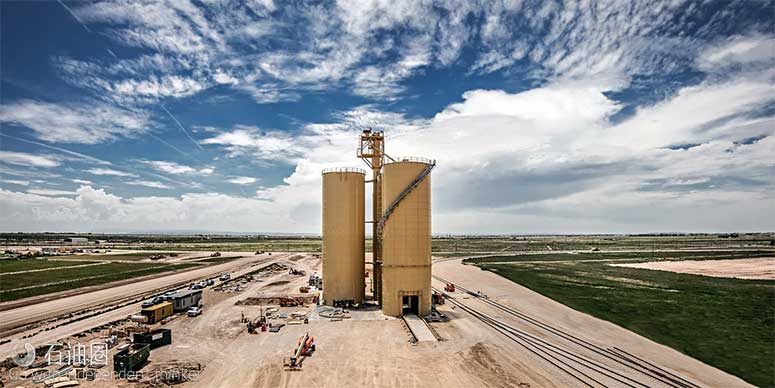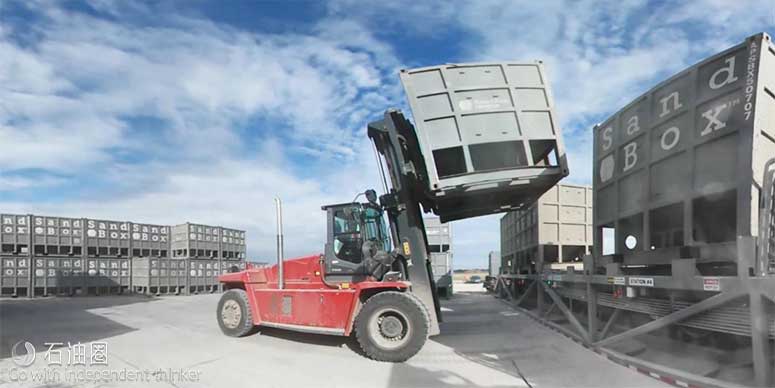Proppant use in the U.S. has seen tremendous growth this year, with demand increasing about 40% since 2017 and roughly 60% since the 2014 peak. The rapid growth has caused not only supply constraints at sand mines but also in last-mile delivery services. The average well in the U.S. consumes about 6,300 tons of sand and is typically fractured over five to seven days. This requires more than 60 trucks to be delivered to a well site daily. In many cases, larger wells and/or zipper fracks on multiwell pads require more than 100 trucks to be delivered daily to the pad location. The challenges of consistently delivering record frack sand volumes and without interruption have never been greater.
Failing to deliver frack sand on time has enormous cost implications. E&P and service companies charge high standby rates for downtime experienced during a fracturing job, including downtime due to waiting on sand. The standby costs can exceed $100,000 per day, not including lost revenue or production. Therefore, ensuring successful last-mile delivery is a high priority for E&P and service companies.
Last-mile challenges
The final leg of frack sand delivery, more commonly known as the last mile, is the most complex piece of the proppant supply chain. Proppant is traditionally delivered by pneumatic or belly-dump trucks, beginning at a transload facility or regional mine and ending at the well site. Sand is then pneumatically blown or moved by belt into sand kings or silos until needed for the fracturing job. This traditional model creates multiple cost and efficiency issues, particularly in a tight trucking market with increasing sand volumes and a shortage of drivers.
The main issue with pneumatic and belly-dump delivery is wellsite detention. Wellsite detention results from long wait times for sand trucks at the well site due to the approximately 45- to 60-minute gate-to-gate unload time for a pneumatic truck and the 15- to 30-minute gate-togate unload time for a belly-dump truck. Although multiple unload points help alleviate some of the wait time, having multiple trucks unload simultaneously requires increasing the wellsite footprint by more than 1,114.8 sq m (12,000 sq ft).
Wellsite detention also is caused by full-silo scenarios, which occur when a fracturing operation goes down and storage silos fill to capacity. With nowhere to unload, pneumatic and belly-dump trucks charge wellsite detention fees until the fracturing operation resumes and full inventory levels are relieved.
For the typical operator, wait times of 8 to 12 hours are not uncommon with pneumatic or belly-dump trucks. Each hour costs about $3 per ton, or approximately 2% of the total per-ton delivered sand cost, meaning that wellsite detention can quickly swing well completion economics from profitable to unprofitable. In addition, wait time at a well location reduces the time that drivers spend driving. In a tight trucking market facing driver shortages amid new electronic logging device rules, this furthers the challenges faced with ensuring steady supply of material to a well site, as fewer truck turns are completed per day and less sand is delivered per truck. Often in cases using traditional sand delivery, two to three times as many conventional trucks and drivers are required to maintain a fracturing operation compared to those used by a SandBox system.
Finally, pneumatic and belly-dump trucks feature a wide array of environmental and safety challenges. Unloading methods used by these trucks often are associated with high noise and dust levels, the latter of which face regulatory challenges given the new U.S. Occupational Safety and Health Administration silica dust regulations that began phasing in in June. Not surprisingly, many large service companies and operators have tried and subsequently abandoned silo, pneumatic and belly-dump solutions.
System logistics
SandBox uses a container that can be consistently unloaded from a specialized trailer on a well location in under four minutes. The SandBox container, which holds 45,000 lb of proppant, is removed from the trailer by forklift and stored on location until required for fracturing. This delivery method eliminates wellsite detention by eliminating long unload times and full-silo scenarios. Technical improvements are allowing Sand-Box containers to move 48,000 lb of proppant, which further reduces the number of trucks required for a single fracturing job.
During the fracturing operation, the container is moved to a conveyor that holds four SandBox containers at a time and can unload sand at a rate of 25,000 lb/min. For many high-intensity zipper jobs, a dual conveyor setup is used, which increases capacity to 50,000 lb/min. Each box can be swapped in less than two minutes.
The specialized trailer that SandBox travels on is designed specifically for the oil field, with an optimized center of gravity that reduces rollover risk and features four integrated twist locks that allow four-minute unloading.
The SandBox system offers environmental benefits by requiring one truck on site at a time and does not require trucks to back in on location. Since there isn’t any pneumatic blowing, the system is quieter than other delivery methods and results in a reduction in the silica dust released during the unloading process.
The container system reduces the wellsite footprint by fitting more than 2.7 MMlb of proppant storage on site in less than 929 sq m (10,000 sq ft), including the space required for trucks to stage and unload. Other container systems have capacities of 1.3 MMlb to 2.5 MMlb of proppant storage in a typical setup and require about 929 sq m to 1,393 sq m (15,000 sq ft) for storage, plus another 929 sq m to 1,393 sq m for truck staging and unloading.
Partnership formed
U.S. Silica acquired SandBox in August 2016. Together, SandBox and U.S. Silica offer a full suite of proppants delivered directly to the blender. This offering frees up resources for E&P and service companies to focus on their core business instead of managing relationships with multiple sand suppliers, railroads, transloads, trucking companies and storage providers. This model allows customers to reinvest capital in growth projects or return capital to shareholders.
A recent case study for this end-to-end system is SandBox’s partnership with SM Energy, a Permian Basin operator. SM Energy partnered with SandBox and U.S. Silica on a delivered sand model to optimize the cost of sand delivery to SM Energy’s well pad.
Herb Vogel, SM Energy’s executive vice president of operations, said the partnership, which includes local Permian sand, is expected to “reduce individual well costs in excess of $400,000.”
Although legacy delivery and storage systems maintain significant share of the proppant logistics market due to prior investments, these are expected to be phased out over time, and a new generation of delivery solutions could make up a majority share in this segment of the industry.

 石油圈
石油圈

